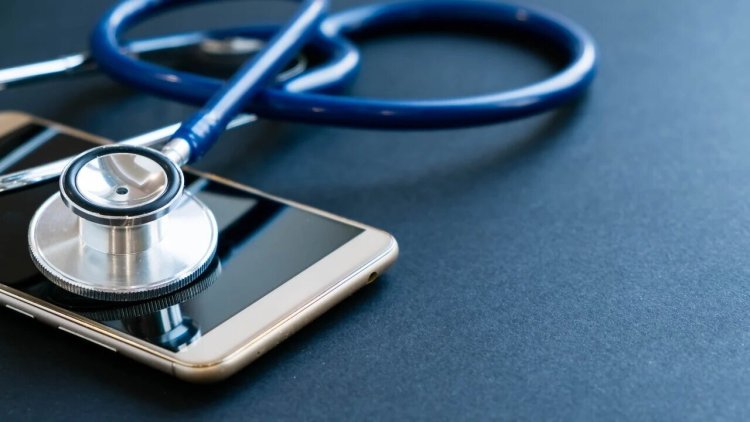How a Technician Used Diagnostics to Save a Water-Damaged Phone
Learn how Phone Clinix and phone diagnostic software helped save a water-damaged phone by diagnosing and repairing critical issues.

Water damage is one of the most common and feared problems for smartphone owners. Whether it’s from a dropped phone in a puddle, a spill from a cup of coffee, or even a phone exposed to heavy rain, water can wreak havoc on a device's internal components. Once a phone has been exposed to moisture, the chances of internal damage are high, and without immediate action, the device might become permanently unusable.
However, with the advent of advanced phone diagnostic software like Phone Clinix, technicians now have the tools to assess, diagnose, and even save water-damaged phones that otherwise may have been considered beyond repair. In this article, we’ll explore a real-world case study in which a technician used phone diagnostic software to rescue a water-damaged phone, walking through the diagnostic process and showcasing how these tools can save devices from permanent failure.
The Challenges of Water Damage in Smartphones
Water damage to smartphones is particularly tricky because it can affect multiple internal components. Some of the most commonly impacted parts of the phone include:
-
The motherboard: This is the primary circuit board that houses key components such as the processor and memory. Water can cause short-circuiting and corrosion, leading to device failure.
-
The battery: When exposed to water, the battery can swell, leak, or even become a fire hazard.
-
The screen: Water can seep into the screen, causing it to malfunction or become unresponsive.
-
The ports and connectors: Charging ports, headphone jacks, and other connectors can corrode when exposed to moisture, making it impossible to charge or transfer data.
When these issues occur, it can seem like the phone is beyond repair. However, if the device is diagnosed properly and the right steps are taken quickly, it’s often possible to mitigate some of the damage and restore functionality. This is where tools like Phone Clinix and other phone diagnostic software come into play.
The Case Study: Diagnosing a Water-Damaged Phone
The Scenario
A customer walked into a repair shop with a smartphone that had been accidentally dropped in water. The phone was still turning on, but the screen was flickering, the touch functionality was unresponsive, and the device was overheating. In addition, the battery was not charging properly, and the ports appeared corroded.
The technician’s first priority was to assess the extent of the water damage and determine whether the phone could be salvaged. Rather than immediately diving into disassembly or assuming the worst, the technician used Phone Clinix to run a series of diagnostic tests to assess the internal components of the phone.
Step 1: Initial Inspection
Before diving into diagnostics, the technician conducted a visual inspection of the device. This included checking for:
-
External moisture: Any visible signs of water inside the screen or ports.
-
Corrosion: Inspecting the charging port, headphone jack, and other openings for signs of corrosion.
-
Water indicators: Many phones have built-in water indicators (indicators that change color when exposed to moisture). These helped determine if the device had been exposed to water recently.
Once the external inspection was completed, the technician was able to confirm that water had indeed infiltrated the phone’s internals, but it wasn’t clear how deeply the damage had spread. This is where phone diagnostic software became invaluable.
Step 2: Running Diagnostic Tests with Phone Clinix
Using Phone Clinix, the technician began by running a series of tests on the phone’s most critical components: the display, battery, processor, and ports. The software was connected to the phone, and it immediately began assessing the device’s internal health.
2.1 Battery Health Check
Water exposure can have a severe impact on a smartphone’s battery. In many cases, the battery can become swollen or incapable of holding a charge. Phone Clinix ran a battery test to measure the battery’s health and charging capabilities.
The test showed that while the battery was still functional, its capacity had been significantly reduced, and it wasn’t charging efficiently. This indicated that the battery was likely affected by the water, and the technician recommended replacing it.
2.2 Display and Touchscreen Test
The next test focused on the display and touchscreen functionality. Phone Clinix performed a grid test to check the screen’s responsiveness. The results revealed that the screen was flickering intermittently, and certain areas were not responding to touch. The flickering could be due to a damaged display controller or a short circuit caused by the water.
2.3 Ports and Connector Test
Water can corrode internal connectors, making it difficult or impossible to charge the phone or connect accessories. The technician used Phone Clinix to test the charging port, headphone jack, and other connectors. The software detected abnormal resistance in the charging port, likely due to corrosion from water exposure. This would require cleaning and possibly replacing the port to restore functionality.
2.4 Internal Sensors and Processor Test
Another important component tested by Phone Clinix was the phone’s internal sensors and processor. The software checked the CPU, RAM, and sensor functionality. Thankfully, the results showed that the processor was still functional, though the phone was running slower than usual, likely due to overheating. The overheating could be linked to a malfunctioning temperature sensor, another casualty of water damage.
Step 3: Analyzing the Results
After completing the diagnostic tests, Phone Clinix generated a detailed report that highlighted the key issues with the phone. The technician could now see that the battery, display, and charging port had all been negatively impacted by the water exposure. The processor and other internal components were still functional but needed attention to restore full performance.
The diagnostic results also showed that the phone had suffered mild corrosion in the charging port, which could eventually lead to connectivity problems if left untreated.
Step 4: Salvaging the Phone
Based on the diagnostic results, the technician took the following steps to attempt to save the water-damaged phone:
-
Battery Replacement: Since the battery was no longer holding a charge efficiently, it was replaced with a new one.
-
Display Repair: The flickering display was repaired by replacing the screen and checking the display controller for damage.
-
Port Cleaning and Repair: The charging port and other connectors were carefully cleaned to remove corrosion. If necessary, the port was replaced to ensure reliable charging.
-
Processor and Overheating: The technician cleaned the phone’s internal components and rechecked the processor. The phone was tested again to ensure that it was no longer overheating.
Once these repairs were completed, the technician ran another round of diagnostics using Phone Clinix to verify that all systems were functioning properly. The phone passed all tests and was fully operational once again.
The Role of Phone Clinix in the Repair Process
The diagnostic software played a crucial role in diagnosing and saving the water-damaged phone. By using Phone Clinix, the technician was able to:
-
Quickly identify key issues: The software helped pinpoint which components were affected by water damage, allowing the technician to focus on the most critical repairs.
-
Avoid unnecessary disassembly: By diagnosing the problem before disassembling the device, the technician was able to avoid causing further damage.
-
Provide transparency: The detailed diagnostic report provided the customer with a clear understanding of what had been wrong with their phone and what needed to be done to fix it.
Phone Clinix made the repair process faster, more efficient, and less expensive, saving both the technician and the customer time and money.
Conclusion
Water damage is one of the most challenging problems for smartphone technicians and owners alike. However, with the help of advanced phone diagnostic software like Phone Clinix, it’s possible to diagnose, assess, and even save water-damaged phones that might otherwise be considered beyond repair. The diagnostic software allows technicians to identify issues quickly, make informed decisions about repairs, and restore the phone’s functionality in a cost-effective manner.
If you find yourself dealing with a water-damaged phone, consider using Phone Clinix to help diagnose the problem. Whether you're a technician or a smartphone owner, these tools can make a significant difference in restoring your device to working order.
What's Your Reaction?















.jpg)
